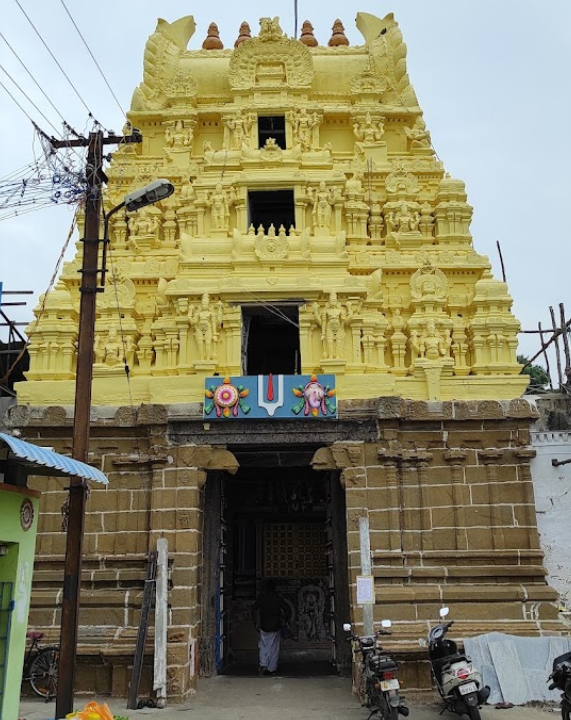Yogi Mahasandan decided to renounce his earthly existence to attain the lotus feet of Lord Vishnu. He undertook severe penance to achieve this goal, possessing powers equal to Indra, the king of the Devas. Shocked by Mahasandan's unwavering penance, Indra attempted to distract him by sending beautiful celestial maidens to entice him. Despite their allure, the yogi remained steadfast.
Ultimately, Indra himself appeared in the form of a male elephant and succeeded in distracting the yogi. Enchanted by the appearance of the elephant, Mahasandan transformed into an elephant and wandered through the forest, eventually reaching Salagrama for a bath.
As an elephant, Mahasandan remembered his penance and the mistake he had made. Seeking redemption, he began visiting the Divya Desams, worshipping Perumal, and looking for a remedy for his past folly. Sage Mrikandu advised him to go to Kanchi and worship Lord Varadaraja Perumal to fulfil his wish.
In Kanchi, the elephant came to the Lord Ashtabhuja Perumal Temple and started offering 14,000 flowers daily. One day, unable to find enough flowers, it began plucking them from a nearby tank but was caught by a crocodile. Like Gajendra in the past, the elephant cried out "Aadhi Moolame" for protection. Lord Vishnu, who had previously saved Gajendra, appeared on His Garuda, vanquished the crocodile with His discus, and granted salvation to the yogi elephant.
Sthalapuranam:
In the Sri Adhikesava Perumal Temple, the deity is depicted with eight hands. Each of His four right hands holds a different weapon: the Chakram (discus), Sword, Flower, and Arrow. His four left hands hold the Sangu (conch), Bow, Kedayam (shield used in sword fighting), and Gadha (mace, also associated with Hanuman and Bhima).
The Sthalapuranam (temple legend) connects this temple with the story of Saraswati and Lord Brahma. After all the demons sent by Saraswati to disrupt Brahma’s yajna (sacred ritual) were defeated by Sriman Narayanan (Lord Vishnu), she sent a fearsome Sarpam (snake) to destroy the yajna. To combat this formidable foe, Lord Vishnu assumed the form of Ashtabhuja Perumal, wielding eight different weapons to vanquish the snake. This snake is represented on the Vaayu end of the yajna sala (ritual site) as "Sarabeswaran" in the temple.
The deity also granted His pratyaksham (divine appearance) to Gajendra, the elephant king, who was rescued from a crocodile by Vishnu. The weapons held by Perumal are said to combat evil and promote good. Collectively, these eight weapons are known as "Divya Aayudha Aazhwargal."
The temple is historically significant as it was constructed by Thondaiman Chakravarthy, also known as Vayiramoghan.
